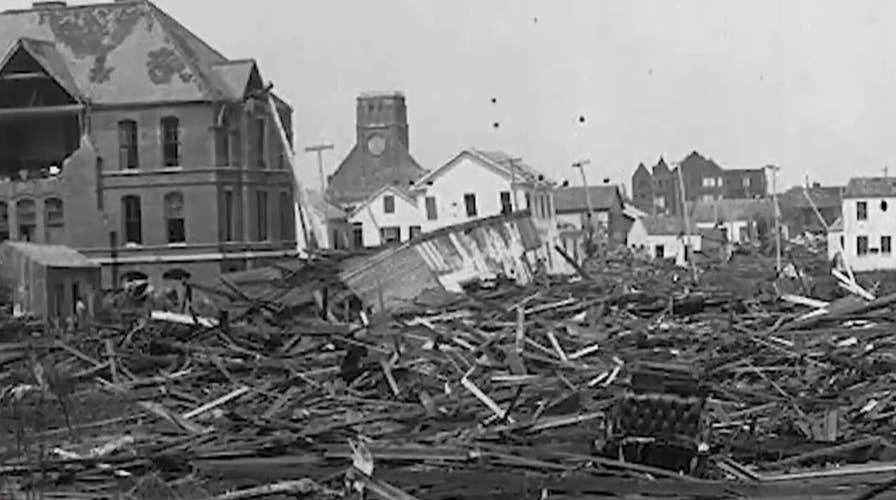A look back at the devastating 1900 Galveston hurricane
An estimated 12,000 lost their lives in the deadliest natural disaster in American history
On Sept. 8, a Category 4 hurricane made landfall in the U.S. – killing thousands of people and leaving behind lasting devastation.
The hurricane, which became known as the Great Storm, ravaged Galveston, Texas, in 1900 – exactly 117 years before Hurricane Irma, the Atlantic Ocean’s most potent storm that is expected to continue its trek across the Caribbean and slam into Florida.
Between 6,000 and 12,000 people died in 1900 after the massive storm hit the southern Texas island, according to a National Oceanic and Atmospheric Administration report. More than 3,500 buildings were destroyed.
The storm brought with it darkness, winds up to 140 mph and a 15-foot surge of water, according to the Houston Chronicle. It destroyed the commercial city that sat less than 9 feet above sea level, at the time home to 35 churches, 30 hotels, 484 saloons and the biggest opera house in Texas.
Several people drowned and many others were killed by flying debris as they tried to escape, according to accounts.
The storm was able to wreak so much havoc, in part, because of the nation’s unpreparedness at the time.
“Sophisticated weather forecasting technology didn’t exist at the time, but the U.S. Weather Bureau issued warnings telling people to move to higher ground. However, these advisories were ignored by many vacationers and residents alike,” said History.com.
HURRICANE IRMA'S STORM PATH: WHAT YOU SHOULD KNOW
Isaac Cline, the Galveston chief U.S. Bureau Meteorologist at the time, thought the Texas town would be able to withstand a hurricane because of the shallow waters along the beach, according to the Chronicle. Cline’s pregnant wife perished during the storm.
“We drifted for three hours, landing 300 yards from where we started. There were two hours that we did not see a house nor any person, and from the swell we inferred that we were drifting to sea, which, in view of the northeast wind then blowing, was more than probable,” Cline recounted in a Sept. 1900 report.
The storm caused a new focus on studying hurricane prevention, according to NOAA.
A large seawall was eventually built to protect Galveston from future storms and flooding – and it did its job during hurricanes in 1961 and 1983, according to History.com.
GALVESTON WAS REFUGE FOR NATION'S ORPHANS, BEFORE AND AFTER DEADLY 1900 HURRICANE
“I believe that a sea wall, which would have broken the swells, would have saved much loss of both life and property,” Cline said in his report.
Hurricane Irma, which has already destroyed many island towns in the Caribbean, is about 450 miles southeast of Miami, Fla., as of Friday morning. It’s traveling west-northwest at approximately 16 mph.
Irma was downgraded to a powerful Category 4 storm Friday morning. President Donald Trump has declared an emergency in Florida as the storm is on a path straight for the Sunshine state over the weekend.


